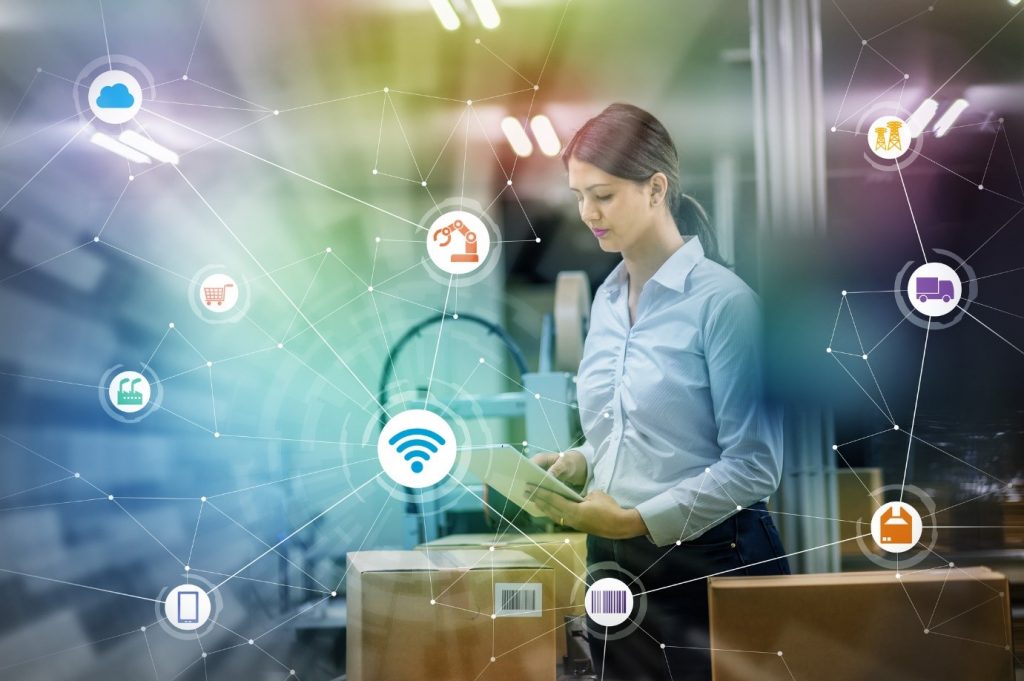Industry View: The Tech That’s Changing Warehousing
24th October 2019

Graham McCarthy from GSM Barcoding, a provider of barcode systems, solutions and inventory system services, gives an overview of the technology changing the warehouse industry.
Every day, technology becomes more and more crucial in every aspect of how we do business. But perhaps one of the places where emerging technologies are the most prominent is in warehousing and logistics.
Technologies such as robotics, drones, IoT and cloud software are being implemented into warehouses to allow companies to more effectively stay competitive in an ever-changing market. Everything from mobile working to automated systems can help evolve warehouse processes to be more efficient in every way. Companies can reap the benefits of these technologies as they allow them access to crucial real-time data, enhanced communication across all employees, increased sales and customer satisfaction and much more.
Here’s a look at the technologies that are transforming warehouses, making multiple processes speedier, more efficient and virtually error-free.
Tracking Software
Tracking technology is paramount for warehouse operations so they can access and process greater volumes of data at much higher levels, whether it’s distribution information or data regarding stock levels. Tracking software can allow not only the organisations themselves to access crucial data and information, but their customers can also utilise this information when making purchase decisions.
Paper-based record keeping no longer cuts it in the high turnover demands of the modern warehouse where optimised efficiency is necessary for profitable operations.
Mobile Technology
When warehouse workers are tethered to a particular location by wires, they are always going to struggle to make that process as efficient as it could be. Mobile technology and the introduction of wireless devices has improved various roles within the supply chain, freeing up employees and allowing them to perform their tasks from anywhere on the factory floor.
Workers can also access their inventory tracking software from anywhere on the go, allowing them to print labels, scan barcodes and update stock levels all while on the move. With a device now in their hand or strapped to their person and no longer confined to a designated area, they can access real-time information, while also automatically sharing data across devices, so everyone on the warehouse floor has all the latest information, improving communications across the board.
IoT and RFID
Today, it feels like everything is connected to the internet. Who would have imagined that you could control your home’s heating, the lights or even the ceiling fan directly from your smartphone? IoT, Internet of Things, makes these kinds of marvels possible. It opens up many opportunities to streamline processes in the supply chain by connecting devices through the internet to do things such as exchange data and provide real-time tracking.
Combined with RFID, radio frequency identification, which can be tagged to each item in an inventory to provide real-time tracking, you can create a streamlined system for stock location with all the information condensed into an easily accessible database.
Drones
It wasn’t that long ago that drones seemed like a futuristic technology that we wouldn’t see in our lifetime. But now they’re here and are even being used in test trials at Amazon in their own drone programme, Prime Air, as delivery vehicles so consumers can expect their packages in 30 minutes or less.
While these trials continue, drones are still being used in other aspects of business, such as in the warehouses of the supply chain. According to supply chain specialists, a drone can do the work of 100 humans over the same time period. Aerial drones can use optimal sensors to help locate items in a warehouse or gauge inventory levels and transmit that data to the warehouse management system. All of this can facilitate fast detection and prevent inventory mistakes.
At the moment, drone adoption is low, with big players like Amazon leading the way, this is due to drone’s current limitations such as payload capacity restrictions, airspace regulations and concern for public safety. But they are likely to see a considerable surge in usage as the technology adapts and becomes easier to integrate into warehouse processes.
AI and Robotics
We might not quite be at the point where automated workers exist alongside human workers, but robots and AI technology is already making strides in warehouse environments. They are mostly used for specific, repetitive tasks for which they are precisely programmed, to free up human workers to do the more complex jobs that AI is not yet capable of performing. The reason we’re unlikely to see robots performing dynamic tasks for many years yet, is that even the most straightforward process requires complicated, sophisticated software and hardware that simply does not exist yet in a commercial sense.
Like the drone, Amazon is leading the way with robotics in their warehouses. They currently have more than 100,000 small, mobile robots as part of their workforce. These wheeled, Roomba-like bots are called “drives”; at just a foot tall and with flat tops, they carry entire shelving units of merchandise around the factory floor to human workers so that they can fulfil orders. The technology is limited, and they follow set paths around the warehouse, which is a far cry from the fully automated warehouses that Amazon sees in their future.
Robotics and AI are likely to pay a much more pivotal role in the future of logistics and the supply chain as the technology becomes more sophisticated and more widely adopted.

